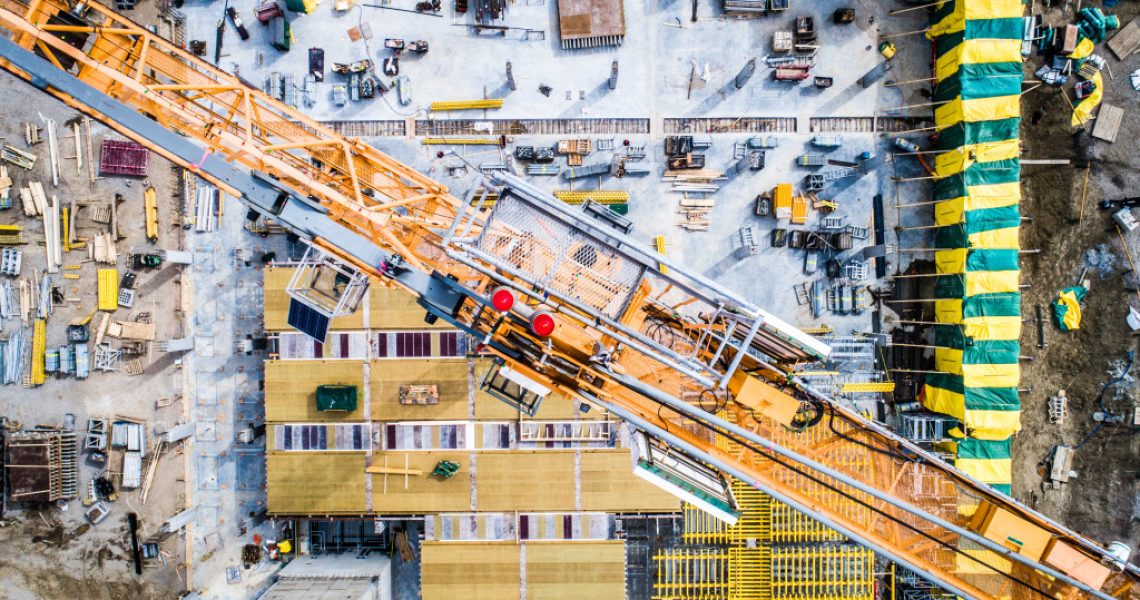Technology has always been a part of the construction industry, from the earliest days of manual labor to the modern use of machines and software. Each new development has improved speed, accuracy, and efficiency in one way or another. Here are four recent technologies that have had a significant impact on construction.
Drones
Drones are quickly becoming a staple in the construction industry. These versatile machines can be used for various tasks, from surveying land to delivering materials. Drones are even being used to 3D print homes and other structures. Due to drones, construction projects can be completed faster and more accurately.
In addition, drones are helping to improve safety on construction sites. By eliminating the need for workers to climb to high places or enter dangerous areas, drones reduce the risk of injuries. For instance, drones can eliminate the risks and potential dangers when inspecting a wind turbine that’s high in the air.
Using drones for wind turbine blade inspections can ensure that your employees won’t have to go up there and risk their lives to do basic checks. You can use drones with video cameras and inspect the blades with ease. As drone technology continues to develop, more innovative applications will likely be found. From providing real-time updates on progress to conducting virtual inspections, drones are poised to revolutionize the construction industry.
3D Printing
3D printing technology is revolutionizing all aspects of construction. In the past, construction projects were limited by the availability of materials and the ability to fabricate them into the desired shapes. With 3D printing, those limitations no longer exist. It is now possible to print virtually any shape imaginable using various materials. As a result, construction projects can now be designed with unprecedented creativity and precision.
In addition, 3D printing is much faster than traditional construction methods, meaning that projects can be completed in a fraction of the time. And because 3D printed structures are often made from recycled materials, they are much more sustainable. Overall, it is clear that 3D printing technology is significantly impacting the construction industry — and the sky’s the limit for what it can achieve in the future.
Virtual Reality
The construction industry is one of the world’s oldest and most important. It hugely impacts the economy, employing millions of people and building the infrastructure that supports our way of life. Construction has recently embraced new technologies, from 3D printing to drones. Now, it is on the cusp of another revolution: virtual reality (VR).

VR is a technology that allows users to immerse themselves in a computer-generated environment. It has various applications, from gaming and entertainment to education and training. And it is already starting to change the construction industry. VR is being used to design projects, plan construction sites, and train workers. It is even being used to build buildings, with prefabricated components assembled in a virtual environment before being sent to the construction site.
As VR technology continues to develop, its application in construction will only increase. Ultimately, VR has the potential to transform every aspect of the construction process, making it more efficient, safer, and more sustainable.
Augmented Reality
Augmented Reality (AR) technology is quickly becoming an integral part of the construction industry. AR provides an immersive experience that allows users to view digital information superimposed on the real world. This technology is used in various ways to improve all aspects of construction, from project planning and design to on-site execution and maintenance.
One of the biggest benefits of AR is its ability to improve communication and collaboration among team members. With AR, project plans and designs can be shared in a completely immersive environment, allowing a more accurate understanding of the work that needs to be done. AR can also be used for on-site training, allowing workers to view instructional content overlaid in their work environment. This can help to reduce mistakes and improve safety on construction sites.
In addition, AR is also proving to be a valuable tool for quality control and asset management. By overlaying digital data on reality, AR can help construction managers identify issues and potential problems before they cause delays or cost overruns. AR can also be used to track assets and inventory, making it easier to keep track of materials and equipment.
As AR technology continues to evolve, it is clear that it will significantly impact the construction industry. AR is changing how construction projects are planned, designed, and executed. And as AR technology becomes more sophisticated, its applications will only become more widespread and impactful.
VR and AR are just a few technologies changing the construction industry. These technologies can improve every aspect of construction, from project planning and design to on-site execution and maintenance. As these technologies continue to develop, they will have an increasingly profound impact on the construction industry, transforming how projects are planned, designed, and built.

